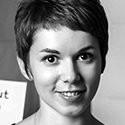Seminars in Hearing Research (10/17/19) - Karolina Charaziak (Univ. Southern California)
Seminars in Hearing Research (10/17/19) - Karolina Charaziak (Univ. Southern California)
| Author: | M. Heinz |
|---|---|
| Event Date: | October 17, 2019 |
| Time: | 1030-1120 |
| Location: | LYLE 1150 |
| Contact Name: | Hari Bharadwaj |
| Contact Email: | hbharadw@purdue.edu |
| Open To: | All |
| Priority: | No |
| School or Program: | Biomedical Engineering |
| College Calendar: | Show |
Seminars in Hearing Research at Purdue (SHRP)
Date: Oct 17, 2019
Location: LYLE 1150
Time: 10:30 -- 11:20 am
Speaker: Karolina K. Charaziak, PhD., Postdoctoral Associate, Auditory Research Center, Caruso Department of Otolaryngology, University of Southern California

Title: The more the merrier: New place-specific sources of cochlear microphonics
Abstract: The cochlear microphonic (CM) constitutes a vector sum of electrical potentials produced by outer hair cells (OHCs). Because CM can be measured with a far-field electrode placed in the vicinity of the cochlea, e.g., in the ear canal or at the round window, it may be useful for diagnosing OHCs impairments—such impairments are one of the most common causes of sensory hearing loss. However, CM measured with a far-field electrode suffers from lack of place-specificity, meaning that CM is not useful for pointing to specific cochlear regions with impaired OHCs. This lack of place specificity is explained by a classic view of CM generation where CM potentials are dominated by contributions from cellular sources located at the basal, high-frequency end of the cochlea, regardless of stimulus frequency. As a result, CM amplitude is expected to vary little with the stimulus frequency. However, contrary to this prediction, we showed that chinchillas’ CMs demonstrate striking rippling patterns when measured in response to low-level tones varied in fine-frequency steps. We propose that the ripples arise through an interference between CM components arriving at the recording electrode with different latencies allowing for either constructive or destructive summation. In this talk I will review a phenomenological model of a chinchilla cochlea that predicts existence of such additional CM components. According to the model, these additional CM components originate near the tonotopic place of the stimulus in the cochlea. We validate that theory by introducing test conditions that affect cochlear processing only near the tonotopic place of the stimulus. For such conditions we observe smoothing of CM amplitudes with frequency as expected if only the classic CM components, originating near the cochlear base, were left intact. Thus, the new additional CM components appeared to be shaped by active cochlear processing near the stimulus tonotopic place and they could provide place-specific information about OHC function.
-----
Working schedule:
https://purdue.edu/TPAN/hearing/shrp_schedule
The titles and abstracts of the talks will be updated here:
Related Link: https://www.linkedin.com/in/karolina-charaziak-a2247a117?_ga=2.239156998.465120757.1571012738-499715227.1566314149

